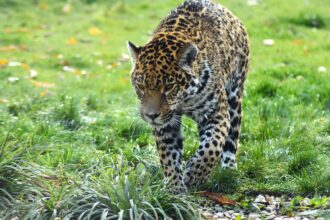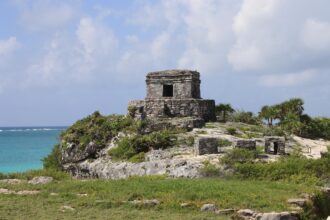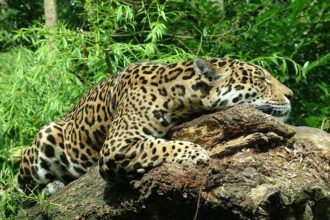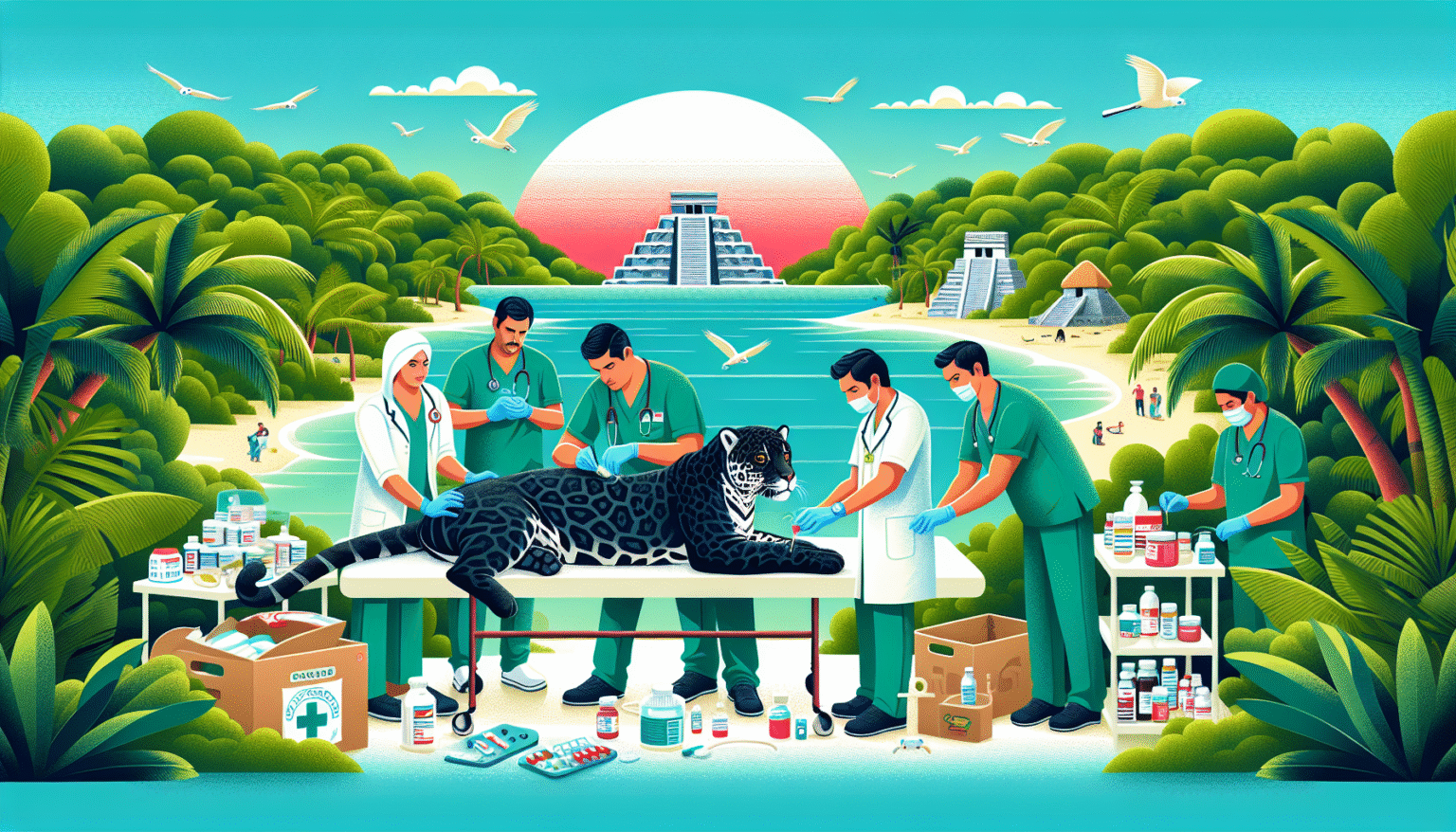Donations that Make a Difference: Jaguar Rescue and Rehabilitation in Tulum
Understanding the Jaguar’s Role in the Ecosystem
The jaguar (Panthera onca) is the largest feline in the Americas and plays a vital role in maintaining the health of its environment. As apex predators, these magnificent creatures regulate prey populations, ensuring a balanced ecosystem. However, habitat loss, poaching, and illegal wildlife trade have critically endangered their populations. In Tulum, Mexico, conservation efforts aimed at jaguar rescue and rehabilitation are imperative. Donations to organizations dedicated to preserving these majestic animals contribute significantly to their rehabilitation and the protection of their natural habitats.
Tulum’s Unique Environmental Context
Tulum, known for its stunning beaches and lush rainforests, is part of the Mesoamerican Biodiversity Hotspot. The area’s diverse ecosystems make it a critical habitat for not only jaguars but also numerous other species. Unfortunately, tourism development and agricultural activities threaten these habitats. Conservation organizations in Tulum are actively working to combat these threats, presenting opportunities for donations to make impactful changes in wildlife rehabilitation and habitat preservation.
The Need for Rehabilitation
Many jaguars enter rehabilitation centers due to injuries inflicted by poachers or car accidents, or because they are orphaned cubs found without their mothers. These centers aim to provide medical care, a nurturing environment, and, if possible, the eventual release back into the wild. Rehabilitation programs ensure that these animals can regain their strength and instincts necessary for survival, helping to restore the local jaguar population.
Jaguar Rescue and Rehabilitation Center: A Case Study
Among the prominent organizations in Tulum is the Jaguar Rescue and Rehabilitation Center, which focuses on the welfare of jaguars and other wildlife. This center is dedicated to rescuing and rehabilitating injured or displaced animals, offering them a safe haven. Their mission emphasizes education, research, and conservation efforts, working to reduce human-animal conflict while promoting coexistence.
Outreach and Education Programs
Educational outreach is a crucial component of the Jaguar Rescue Center’s mission. Through community engagement, they raise awareness about the importance of biodiversity and the role of jaguars in the ecosystem. Donations foster these educational programs, which serve to inform locals and tourists alike about wildlife conservation. Workshops, guided tours, and presentations are commonly offered, enhancing community involvement and supporting conservation efforts.
The Importance of Financial Contributions
Financial contributions to the Jaguar Rescue and Rehabilitation Center provide essential resources for ongoing projects. These contributions fund:
-
Medical Care: Donations help cover veterinary expenses, including routine check-ups and emergency care for injured animals.
-
Feeding and Habitat Maintenance: Regular funding ensures that rescued jaguars and wildlife receive proper nutrition and that their living environments mimic their natural habitats.
-
Research Initiatives: Contributions support ongoing research aimed at understanding jaguar behavior, ecology, and genetics, vital for effective conservation strategies.
-
Expansion Projects: Funds raised may assist in expanding the facility, allowing for more animals to be rescued and rehabilitated, ultimately increasing the capacity for conservation efforts.
- Sustainability Programs: Contributions may also be directed towards developing sustainable practices among local communities, minimizing their impact on wildlife.
How to Contribute
Supporting the Jaguar Rescue and Rehabilitation Center can be done through various means:
-
Monetary Donations: Direct financial contributions can have an immediate impact on the center’s operational capabilities.
-
Adoption Programs: Many rehabilitation centers offer symbolic adoption programs where donors support the care of a specific animal, engaging them personally in the conservation journey.
-
Volunteering: Volunteer opportunities allow individuals to contribute their time and skills, helping with animal care, facility maintenance, and educational outreach.
- Awareness Campaigns: Spreading the word through social media or personal networks can amplify the reach of the center’s message, potentially attracting more support.
The Ripple Effect of Donations
Each contribution, no matter how small, creates a ripple effect within the community and the ecosystem. As more people become involved in conservation efforts, the collective impact can lead to substantial changes. Protecting jaguars not only helps the species but also contributes to the ecological balance of the region, benefiting other wildlife and plant species.
Collaborations with Local and Global Entities
The Jaguar Rescue and Rehabilitation Center often collaborates with other conservation organizations, government agencies, and academic institutions at both local and global levels. These partnerships enhance their effectiveness, fostering a comprehensive approach that combines resources, expertise, and advocacy for policy reform focusing on wildlife protection.
Success Stories
The impact of donations can be seen in numerous successful rescue and rehabilitation stories. Several jaguars have been rehabilitated and released back into the wild, contributing to the revival of local populations. These success stories are celebrated and documented, serving not only as a testament to the impact of donations but also inspiring further contributions and support.
Local Community Involvement
Engaging the local community is essential for the long-term success of conservation efforts. The Jaguar Rescue and Rehabilitation Center actively collaborates with local businesses, schools, and community leaders to foster a sense of ownership and responsibility towards wildlife conservation. By involving the community, the center works towards establishing a culture of respect for nature, which is critical in preserving the jaguar population.
Moving Forward
With continued support from donors, the Jaguar Rescue and Rehabilitation Center in Tulum can expand its reach and effectiveness. Each donation paves the way for innovation in conservation techniques, enhancing the survival chances of jaguars and other impacted wildlife. As awareness grows, the hope is to see a future where jaguars thrive in their natural habitats, safeguarded by strong conservation efforts backed by community support and responsible tourism.
Conclusion
While the focus of this article was to discuss the significance of donations to jaguar rehabilitation efforts in Tulum, the underlying message is one of hope and unity. The efforts of organizations like the Jaguar Rescue and Rehabilitation Center demonstrate the profound impact that dedicated individuals and communities can have when they come together for a common cause—preserving the majesty of wildlife for generations to come.
Donations not only provide critical financial support but also foster a culture of sustainability and conservation, proving that collective efforts can create meaningful change in the fight to protect the world’s jaguar populations.







